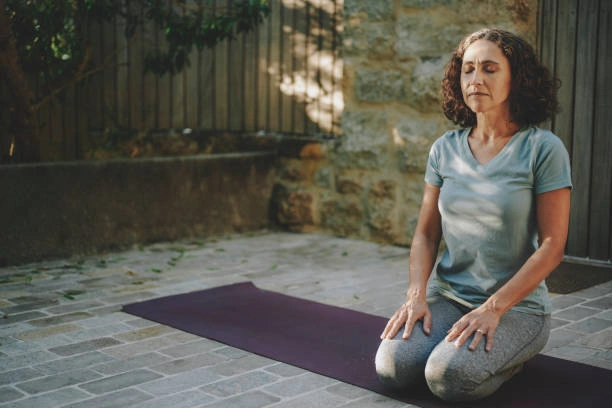20 Practical Tips for Meditation
It’s an amazing feeling: I am no longer a puppet controlled by my mind—no longer manipulated by programming. I’ve become my own master, not governed by my thoughts. While building a long-term meditation habit takes perseverance, you can start with the simplest steps and gradually form a good habit. Keep a relaxed mindset, and don’t expect to do everything perfectly at the beginning—that’s why we call it “practice”!
20 practical meditation tips:
-
1.Start with two minutes of sitting meditation
It’s simple but requires focus. For beginners, two minutes is enough. Start by meditating for two minutes each day for a week. If it goes well, increase it to four minutes per day. By the second month, you may be meditating for 10-20 minutes daily, which is impressive! Start small.
-
2.Make it the first thing you do each morning
It’s easy to say, “I’ll meditate every day,” but then forget. Instead, set a reminder for yourself, such as a note with the word “meditate” in a place you’ll see right after waking up.
-
3. Don’t worry too much about how to do it—just do it
Many people stress over where to sit, how to sit, or what cushion to use. These considerations are fine but not essential for starting meditation. Just sit on a chair, couch, or bed and begin. At first, how you sit isn’t important—just choose a quiet, comfortable spot.
-
4. Check in with how you’re feeling
Before starting meditation, check in with how you feel in that moment. How does your body feel? What is the state of your mind? Busy? Tired? Anxious? Whatever you’re feeling, accept it as part of the process.
-
5. Count your breaths
Once you’ve settled, focus your attention on your breathing. As you inhale, mentally count “one.” As you exhale, count “two.” Keep doing this up to ten, then start over from one.

-
6. Return to your breath when your mind wanders
Your mind will wander—that’s almost guaranteed. And that’s okay. When you notice it, smile gently and return your attention to your breathing. Start counting again from “one” and continue practicing.
-
7. Cultivate a loving attitude
When thoughts and feelings arise during meditation, treat them as friends, not intruders or enemies. They’re part of you, but not all of you. Be kind to them and don’t be too harsh.
-
8. Don’t worry about doing it wrong
You may worry that you’re meditating incorrectly—that’s fine. We all do it, and you’re not doing anything wrong. There is no perfect way to meditate. Just feel happy that you’re meditating at all.
-
9. Don’t stress about clearing your mind
It’s normal to have thoughts. The brain is a thought factory, and we can’t simply shut it down. Instead, keep practicing focusing your attention, and when your mind wanders, bring it back to your breath.
-
10. Sit with any thoughts or feelings
After a week of practice, you can begin sitting with any thoughts or emotions that arise. We tend to avoid feelings like frustration, anger, or anxiety, but try to sit with them, staying curious.

-
11. Know yourself and stay present
Meditation is not just about focusing your attention—it’s also about learning how your mind works. What’s going on in your head? It’s hazy, but by observing your distractions and difficult emotions, you’ll start understanding yourself better.
-
12. Be your own friend
When you set out to know yourself, do it kindly, not critically. You’re getting to know a friend. Smile and send yourself love.
-
13. Do a body scan
Once you’re good at tracking your breathing, try focusing your attention on one body part at a time. Start with your feet—what sensations are there? Slowly move up to your toes, ankles, legs, all the way to your head.
-
14. Notice the light, sounds, and energy around you
After a week of breath-focused practice, try focusing on the light in your surroundings. Pick a spot to rest your eyes on and notice the light in the room. Another day, focus on the sounds around you. Then, try sensing the energy in the space.
-
15. Make a commitment to yourself
Don’t just say, “Okay, I’ll try meditation for a couple of days.” Make a true commitment to yourself. Lock this decision in your mind for at least a month.

-
16. Meditate anywhere
If you’re traveling or miss your morning meditation, you can meditate at the office, in a park, on your commute, or while walking. Throughout your life, you’re practicing cultivating mindfulness.
-
17. Meditate with a teacher
If you have the chance, meditate with a professional teacher. It’ll make a big difference. Not only will you progress faster, but you’ll also receive guidance, healing, and support.
-
18. Meditate with a partner or group
You can meditate with a spouse, child, or friend. Or join a group of meditators to check in daily, logging your sessions together. This helps build lasting habits.
-
19. Join a community
Find a meditation community to join. It could be an online course, a local Zen group, or a Tibetan Buddhist community. A group gives you strength, answers questions, provides support, and encourages you along the way.
-
20. Smile after meditating
Appreciate that you took time for yourself, kept your commitment, and showed yourself you’re trustworthy. You spent time getting to know yourself and being your own friend—what a wonderful two minutes!
Meditation brings countless, surprising benefits. If you want to start meditating, now is the time! Heal your mind and body, change your life, improve your relationships—all transformation begins with meditation.






